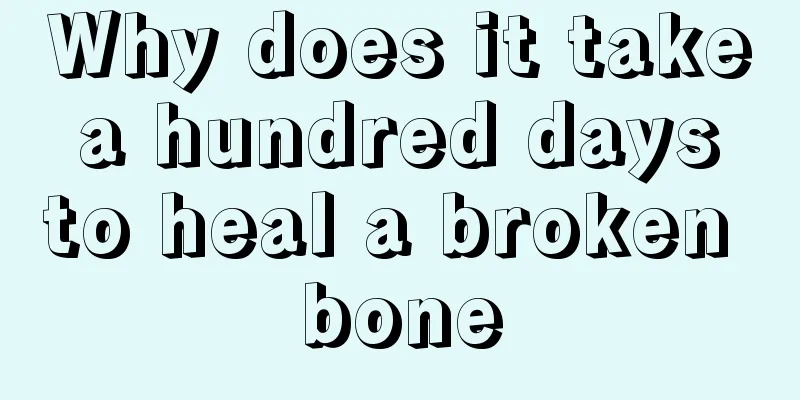Why does it take a hundred days to heal a broken bone

|
Perhaps everyone has heard the saying that it takes a hundred days to heal a broken bone. If people accidentally hurt themselves while doing something, they may suffer from fractures, sprained ankles, etc. In the face of these situations, we need to take some time to adjust our bodies. People usually take a hundred days to recuperate. So why is it a hundred days? Let's take a detailed look at why it takes a hundred days to recuperate after a broken bone. Fracture healing is a continuous process. Generally speaking, it can be divided into three stages. The first stage is called the hematoma organizing stage. Within 6-8 hours after the fracture, the hematoma begins to form blood clots, capillaries proliferate, various fiber cells invade, the hematoma becomes organized, and the granulation tissue turns into fibrous connective tissue, which initially connects the fracture ends together. This period is completed about 2-3 weeks after the fracture. The second stage is called the initial callus formation stage. The fibrous connective tissue at the fracture ends ossifies through the proliferation, degeneration, and calcification of chondrocytes. This is endochondral ossification, and this period generally takes 4-8 weeks. The third stage is called the callus remodeling stage. The original callus is transformed, osteoblasts proliferate, new trabeculae gradually increase, and gradually arrange into regular and dense trabeculae, so that the fracture ends form a bony connection. This period takes 8-12 weeks. It usually takes about three months from fracture to bone connection. Therefore, there is some truth in the saying that it takes a hundred days to heal a broken bone. However, the fracture healing process is affected by many factors, such as age, physical health, fracture site, fracture type, degree of soft tissue injury, infection and treatment method. For example, a child's femoral fracture will basically heal in about a month, but an adult's fracture often takes three months to heal. Fractures heal faster in areas with good blood circulation, while fractures heal slower in areas with poor blood circulation. Poor fracture alignment, severe soft tissue injury, infection at the fracture site, loose fixation, and premature activity can all affect the healing speed of the fracture. For example, fractures of the metacarpals, phalanges, joints, and children's fractures can cause joint stiffness, functional impairment, and even disability due to delayed activity. On the contrary, even though some fractures are healed, forcing them to move will not only fail to promote the healing of the fractures, but will cause delayed healing of the fractures or even nonunion. Therefore, in order to make the fracture heal as soon as possible and restore good function, patients with fractures should correctly understand the saying that it takes 100 days to heal a broken bone, follow the doctor's guidance, and carry out reasonable treatment and functional exercises to achieve good results. |
>>: What to do if the tendons hurt after a fracture
Recommend
What are the methods to lift the buttocks
Female friends all want to lift their hips and ma...
Is there any way to completely prevent the recurrence of tongue cancer
Tongue cancer is also a cancer. This disease has ...
What are the complications after permanent pacemaker surgery
What are the complications after permanent pacema...
The heart is fine, but the heart rate is fast, what's going on?
The human heart is like a machine. When the heart...
The main symptom of breast cancer is breast lumps
The main symptom of breast cancer is a breast lum...
Sharp and wet scrotum
Many men will feel scrotal pain. A careful observ...
Can recurrence of ovarian tumor be cured?
Ovarian tumors bring a lot of harm to our lives. ...
Can thyroid cancer be treated without surgery?
Thyroid cancer cannot be treated without surgery....
How to care for fixed dentures
In our lives, many people always wear dentures to...
What are the hazards of rare earths to the human body?
I believe everyone has heard of rare earths. Rare...
Is urinary pain caused by bladder cancer?
The bladder is an organ that stores urine. If you...
The efficacy and function of seabuckthorn flavonoids_The efficacy and function of seabuckthorn flavonoids
For the elderly, aging will cause high blood lipi...
Symptoms of gastric varicose veins, there are 3 clinical manifestations
The main cause of esophageal varices at the fundu...
Can I drink white wine while eating shrimps
Shrimp meat is a very soft ingredient and is very...
Is herpes simplex contagious? It turns out to be like this
Herpes simplex is a common skin disease in daily ...









